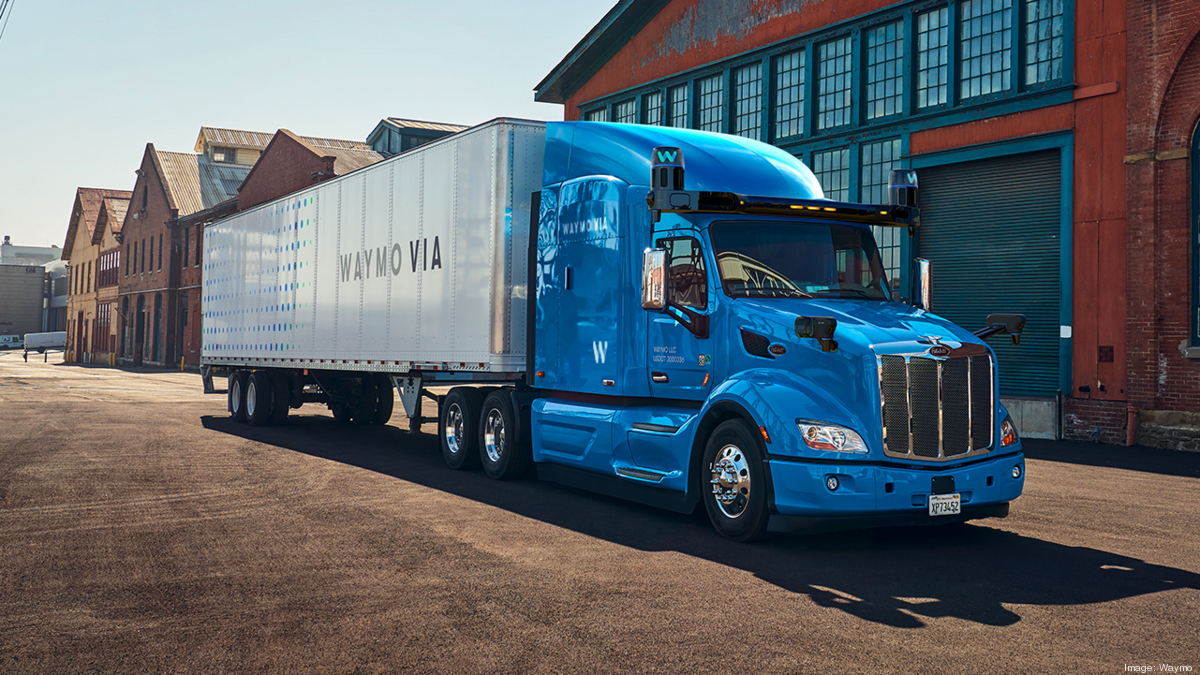- Navigating the Future: How are recent legislative changes across various states shaping the roadmap for autonomous truck adoption? Discover the pivotal updates that could redefine the logistics industry.
- Regulatory Insights: Delve into the latest federal initiatives by the FMCSA aimed at integrating high-level autonomous driving systems safely into the national fleet. What does this mean for the future of transportation?
- Technology Meets Regulation: Explore how cutting-edge technological advancements in autonomous driving are compelling regulators to adapt. Are we ready for the next significant shift in trucking?
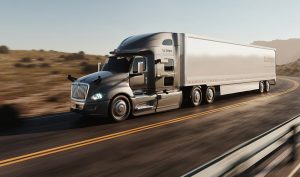
Navigating the future: Autonomous trucks are steering us toward revolutionary changes in logistics and transport. (TuSimple Autonomous Truck)
The advancement of autonomous truck regulations is reshaping the future of the transportation industry. As self-driving technology accelerates, understanding the legal and regulatory landscape becomes crucial for stakeholders aiming for widespread adoption of autonomous trucking.
Overview of Autonomous Truck Regulations
The journey towards integrating autonomous trucks into mainstream logistics is fraught with regulatory hurdles. Both federal and state governments are grappling with establishing laws that ensure safety without stifling innovation. The regulatory challenges in autonomous trucking are multifaceted, involving technical, legal, and ethical considerations. For an overview of the evolution of autonomous trucks, learn more about their development here.
Federal Laws Impacting Autonomous Trucking
At the federal level, agencies like the Department of Transportation (DOT) and the National Highway Traffic Safety Administration (NHTSA) play pivotal roles. They are responsible for setting nationwide safety standards and guidelines for autonomous vehicles, including self-driving trucks. The Federal Motor Carrier Safety Administration (FMCSA) is also instrumental in regulating commercial vehicles.
Recent developments at the federal level indicate a growing interest from US regulatory bodies in creating a comprehensive legal framework for autonomous vehicles, including self-driving trucks. While specific comprehensive legislation directly addressing self-driving trucks has not yet been passed, the Federal Motor Carrier Safety Administration (FMCSA) has been active in proposing rulemaking to address the safety, insurance, and operational standards required for higher levels of autonomous vehicle (AV) automation, particularly Levels 4 and 5. Explore how federal regulations are shaping the future of transportation, click here for detailed insights.
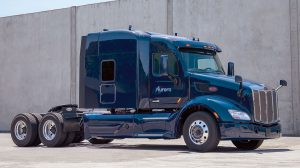
Technological leaps and regulatory bounds: Ensuring the two pace together is key to sustainable advancements. (Aurora Innovation Peterbilt 579 Autonomous Truck)
Enjoying our insights?
Subscribe to our newsletter to keep up with the latest industry trends and developments.
Stay InformedThe FMCSA issued a supplemental notice to a 2019 advanced notice of proposed rulemaking, titled “Safe Integration of Automated Driving Systems (ADS)-Equipped Commercial Motor Vehicles (CMVs)” in early 2023. This document seeks public input on various aspects of ADS deployment, such as inspection requirements, roadside inspections, and additional safety protocols needed for higher automation levels in interstate commerce. This is a clear move toward establishing a uniform regulatory framework that will ultimately govern the nationwide use of autonomous trucks.
State-Level Regulatory Challenges
While federal laws provide a framework, individual states have the authority to regulate the operation of autonomous trucks on their roads. This leads to a patchwork of rules, where some states are more permissive, and others impose strict regulations or outright bans.
For instance, states like Arizona and Texas have been proactive in enabling autonomous vehicle testing and deployment, providing a favorable environment for industry players. Conversely, other states may require a human driver to be present or have not yet established clear regulations, creating uncertainty for companies looking to expand operations.
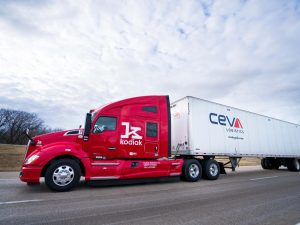
Safety first: Setting new standards is not just an option but a necessity for the autonomous era. (CEVA Logistics Kodiak Robotics Autonomous Truck)
Recent developments include Pennsylvania’s legislation allowing the testing and deployment of autonomous vehicles without a human operator, which could significantly impact the adoption of autonomous trucking platoons, according to the American Bar Association.
Similarly, Mississippi’s enactment of the Fully Autonomous Vehicle Enabling Act allows almost unrestricted operation of autonomous vehicles on its roads, Faegre Drinker Biddle & Reath LLP.
Safety Standards and Compliance
Ensuring self-driving truck safety standards is paramount. Manufacturers and operators must comply with rigorous testing protocols and safety assessments to meet both federal and state requirements. The lack of standardized safety metrics poses a challenge, as different jurisdictions may have varying criteria for what constitutes safe operation. Dive into the diverse state laws governing self-driving vehicles, explore this page for more details.
Liability and Insurance Concerns
One of the most significant regulatory hurdles is determining liability in the event of an accident involving an autonomous truck. Traditional models of liability, which focus on driver error, are not directly applicable when the vehicle operates autonomously.
Who Is Liable in an Autonomous Truck Accident?
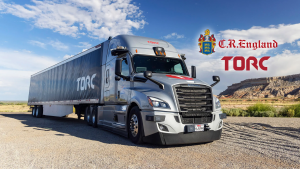
A unified framework: Bridging state differences to roll out a cohesive national strategy for autonomous vehicles. (TORC & CR England Autonomous Collaboration)
Potentially responsible parties include the vehicle manufacturer, software developers, fleet operators, and even third-party service providers. Establishing clear liability frameworks is essential to protect consumers and provide legal certainty for businesses. Insurance models also need to adapt to account for the unique risks associated with autonomous vehicles, prompting the development of new insurance products and risk assessment methodologies. Learn about the legal implications and policies affecting autonomous transportation, check out this page.
Timeline for Adoption of Autonomous Trucks
The timeline for autonomous truck adoption hinges on overcoming regulatory challenges. While technological advancements are rapid, legal barriers could delay widespread implementation by several years. Industry experts predict that fully autonomous trucks may not be commonplace until the late 2020s or beyond.
Factors influencing the timeline include the pace of regulatory development, public acceptance, infrastructure readiness, and the resolution of liability issues. Companies are eager to deploy autonomous trucks to improve efficiency and reduce costs, but regulatory uncertainties may slow progress.
Technological Advancements Affecting Regulations

From policy to pavement: How emerging laws are driving the road ahead for autonomous trucking. (US Xpress Joins Embark Network)
Innovations in autonomous driving technology continually outpace regulatory frameworks. This creates a gap where existing laws may not adequately address new capabilities or potential risks. For example, advancements in sensor technology and artificial intelligence enable higher levels of vehicle autonomy, but regulations may not reflect these capabilities. For more on the technology behind autonomous trucks and their safety implications, follow this link.
How Do Technological Changes Impact Autonomous Truck Regulations?
The rapid evolution of technology necessitates adaptive regulatory approaches. Regulators face the challenge of creating flexible policies that can accommodate future innovations without compromising safety. This includes considering over-the-air software updates, cybersecurity measures, and data privacy concerns.
Infrastructure Requirements
The successful deployment of autonomous trucks depends on infrastructure that can support advanced technologies. This includes:
- Smart Roads: Highways equipped with sensors and communication systems to interact with autonomous vehicles.
- 5G Connectivity: Reliable, high-speed communication networks are essential for real-time data transmission.
- Digital Mapping: Accurate and up-to-date maps enable autonomous systems to navigate effectively.
What Infrastructure Is Needed for Autonomous Trucks?
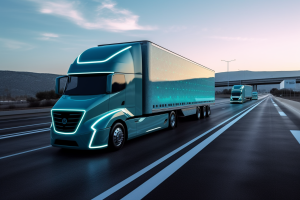
Collaboration is the new engine: Industry stakeholders must drive forward together to navigate the complexities of autonomous trucking.
Investment in infrastructure is a critical component of facilitating autonomous trucking, and government policies play a crucial role in prioritizing and funding these initiatives. Public-private partnerships may be necessary to develop the required infrastructure efficiently. Discover how regulations impact public perception and industry practices, visit this link for further reading.
Ethical and Social Considerations
Beyond legal and technical challenges, autonomous trucking raises ethical and social questions. The potential displacement of truck drivers due to automation is a significant concern. Policymakers must consider the socioeconomic impact and explore measures such as retraining programs to mitigate adverse effects.
How Will Autonomous Trucks Affect Employment in the Trucking Industry?
While automation may reduce the demand for traditional driving roles, it could also create new jobs in vehicle maintenance, fleet management, and technology support. Balancing these shifts requires strategic planning and policy interventions. Stay updated with the latest developments in autonomous truck regulations, explore the latest news here.
Data Privacy and Cybersecurity
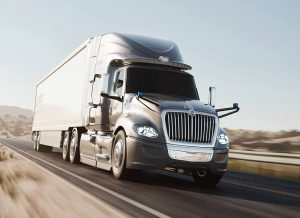
Every innovation brings challenges: Addressing ethical and societal impacts of replacing drivers with algorithms. (TuSimple Autonomous Truck)
Autonomous trucks generate and rely on vast amounts of data. Ensuring the privacy and security of this data is a regulatory imperative.
What Measures Are in Place to Protect Data in Autonomous Trucks?
Regulations must address:
- Data Ownership: Clarifying who owns the data generated by autonomous vehicles.
- Privacy Protections: Implementing safeguards to protect personal and sensitive information.
- Cybersecurity Standards: Establishing requirements to prevent hacking and unauthorized access.
Federal and state agencies are working to develop guidelines, but comprehensive regulations are still evolving. Industry collaboration is crucial to establishing robust cybersecurity practices.
International Regulatory Landscape
Autonomous trucking is a global phenomenon, and international regulations can influence domestic policies.
How Do US Autonomous Truck Regulations Compare Internationally?
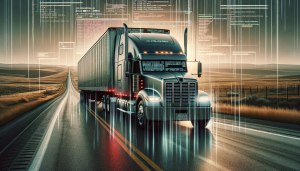
Privacy on the digital highway: Protecting data in a world where vehicles know more about us than ever before.
Countries like Germany, China, and Japan are also advancing in autonomous vehicle legislation. International standards and agreements may impact US regulations, especially concerning cross-border freight transport. Harmonizing regulations can facilitate global trade and technology exchange.
Collaboration with Industry Stakeholders
Effective regulation requires input from various stakeholders, including technology companies, logistics providers, and public interest groups.
Why Is Industry Collaboration Important in Shaping Autonomous Truck Regulations?
Collaboration ensures that regulations are practical, enforceable, and aligned with technological capabilities. It also helps build consensus and public trust. Industry alliances and advocacy groups often engage with regulators to provide insights and recommendations.
Public Perception and Acceptance
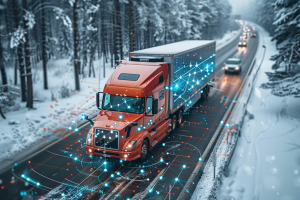
International roadmaps: Learning and adapting from global autonomous vehicle strategies.
Public acceptance is a critical factor in the adoption of autonomous trucks.
What Is the Public’s View on Autonomous Trucks Sharing the Road?
Safety concerns and unfamiliarity with the technology can lead to resistance. Educational campaigns and transparent communication about safety measures are essential to gain public support. Demonstrating the benefits, such as reduced accidents due to human error and improved efficiency, can help shift public opinion.
Recommendations for Moving Forward
To overcome regulatory hurdles, the following actions are recommended:
- Develop Comprehensive Federal Legislation: A unified legal framework can reduce confusion and promote consistency across states.
- Standardize Safety Protocols: Establishing clear safety benchmarks can facilitate compliance and enforcement.
- Address Liability and Insurance Issues: Creating clear guidelines for liability and developing appropriate insurance models are essential.
- Invest in Infrastructure: Enhancing roads and communication networks will support autonomous vehicle operation.
- Promote Research and Testing: Supporting pilot programs and research initiatives can advance understanding and improve technology.
- Enhance Public Engagement: Involving the community in discussions can address concerns and improve acceptance.
- International Cooperation: Engaging in international dialogues can harmonize standards and practices.
Conclusion

Infrastructure for tomorrow: Building the necessary foundation today ensures a smoother transition to autonomous transport.
Navigating the complex landscape of autonomous truck regulations is critical for the future of transportation. While significant progress has been made, substantial legal and regulatory hurdles remain. Overcoming these challenges requires a concerted effort from policymakers, industry participants, and other stakeholders to ensure that the benefits of autonomous trucking can be realized safely and efficiently. By proactively addressing these issues, the industry can pave the way for a new era in logistics and freight transportation. Stay updated with the latest developments in autonomous truck regulations, explore the latest news here.
Navigating the Regulatory Landscape for Autonomous Trucks
- State-Level Progression: States like Pennsylvania and Mississippi are pushing the boundaries with laws that facilitate the deployment of autonomous trucks, setting precedents for less restrictive regulations and fostering innovation in autonomous vehicle testing.
- Federal Focus: The FMCSA’s recent actions signal a significant push towards creating a unified framework for autonomous trucks. Their ongoing rulemaking efforts aim to address crucial aspects such as safety standards and operational protocols for higher automation levels.
- Technological and Regulatory Sync: As technology rapidly advances, the gap between capabilities and existing regulations widens. How federal and state bodies are working to bridge this gap provides crucial insights into future legislative directions.
Strategic Pathways: Addressing 7 Legal Challenges in Autonomous Trucking
- Comprehensive Legislation: There is a need for more thorough federal and state legislation that specifically addresses the nuances of operating autonomous trucks, including standards for safety, liability, and insurance.
- Safety and Standards: Establishing universally accepted safety standards and protocols for autonomous trucks is crucial. These need to detail everything from manufacturing to operation phases to ensure public safety.
- Liability and Insurance: Determining liability in the event of accidents involving autonomous trucks is complex. There must be clear guidelines on whether manufacturers, software developers, or operators are held responsible.
- Privacy and Data Security: As autonomous trucks rely heavily on data collection and processing, robust protections for data privacy and stringent cybersecurity measures must be in place to protect against unauthorized data breaches and hacks.
- Infrastructure Compatibility: Adequate infrastructure must be developed or adapted to support the unique needs of autonomous trucks, such as specialized road sensors and communication systems.
- Public Acceptance and Trust: Gaining public trust and acceptance is essential for widespread adoption. This involves transparent communication about the benefits and risks, and demonstrating the reliability and safety of autonomous trucks.
- Ethical and Employment Concerns: Addressing the ethical implications, particularly regarding employment displacement within the trucking industry, requires thoughtful strategies to mitigate job losses, such as retraining programs.
Further Reading on Autonomous Truck Regulations
- Learn about the latest federal actions and strategies for the integration of automated driving systems at the US Department of Transportation’s Automated Vehicles Comprehensive Plan.
- For insights into the Federal Highway Administration’s initiatives on automated vehicles and their integration into the US infrastructure, visit Automated Vehicle Activities and Resources by FHWA.
- Discover detailed discussions on safety standards and proposed regulations for automated driving systems-equipped commercial motor vehicles at FMCSA Safe Integration of ADS-Equipped CMVs.
- Understand the regulations and goals outlined by the USDOT to promote safe and innovative transportation technologies in the USDOT Automated Vehicles Comprehensive Plan.
- Review the latest guidance for automated driving systems and how it impacts safety and innovation at NHTSA’s New Automated Driving Systems Guidance.
- Examine the legal landscape of autonomous trucking and the implications for national and international regulations at the American Bar Association: Risk and Regulation for Self-Driving Trucks and Automation in the Trucking Industry.
- Delve into recent legislative and regulatory developments affecting autonomous vehicles and their impact on the industry at Faegre Drinker: 2023 Legislative and Regulatory Developments Affecting Autonomous Vehicles.

